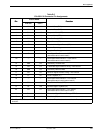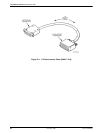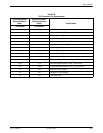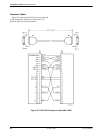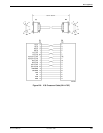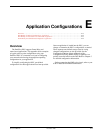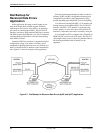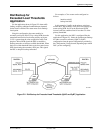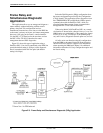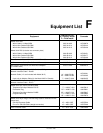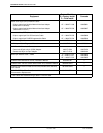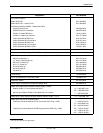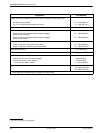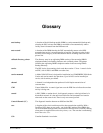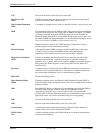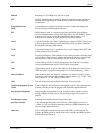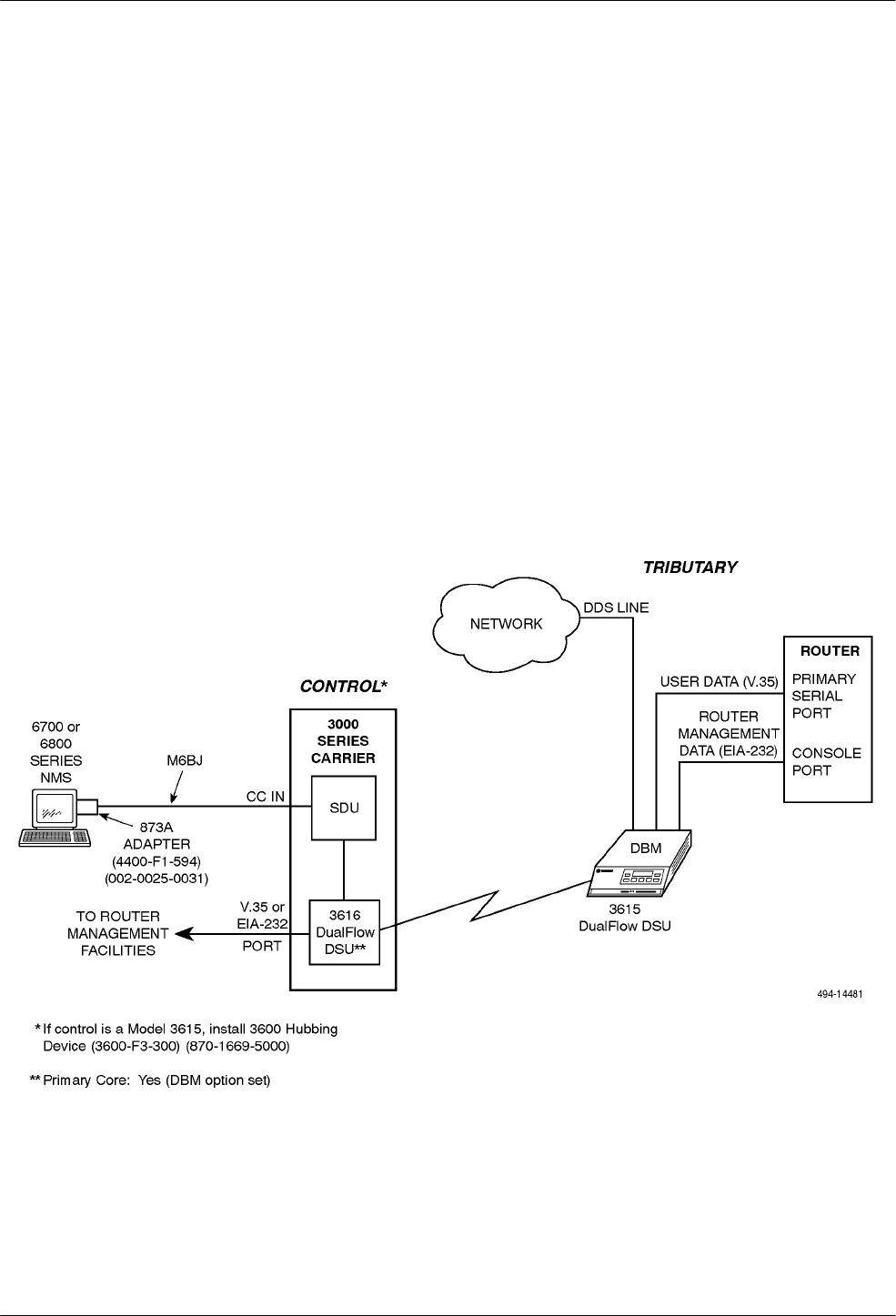
COMSPHERE DualFlow Data Service Units
E-4 December 1996 3615-A2-GB20-20
Frame Relay and
Simultaneous Diagnostic
Application
This
application allows you to manage and diagnose a
router remotely without interfering with the router’s
primary data path. This configuration involves
simultaneous transmissions:
user data over the DDS line
to the router’s primary serial port, and router-management
data over a line going to the router’
s console interface.
Use the DSU’
s V
.35 interface for the user data, and use
the DSU’s EIA-232-D/V.24 interface for router-
management data and DSU diagnostics.
Figure E-3 shows this type of application using a
DualFlow DSU. User data is transmitted at the DDS line
speed (the default setting is 56 kbps), while diagnostic
data is transmitted at the dial line speed (the default
setting is 9.6 kbps).
Select the Dial Diagnostic (DiDg) configuration from
the preset configurations provided by the Configuration
(Confg) branch. This application allows diagnostics from
the COMSPHERE 6700 or 6800 Series NMS to permit
communication with the DualFlow DSU, while also
allowing Router Management System communication
through the EIA-232-to-console connection.
When using Model 3616 DualFlow DSUs at a central
site location as shown below
, change
Primary Cor
e to Yes
(DBM option set). Additionally
, at the control site, change
Primary Cor
e to Y
es,
TxClkSource to Int (DBM option
set), and
Position (Diagnostic General option set) to Cntrl.
All calls are in one direction using this configuration –
from the DBM to the router. Password (Pswrd) security
should also be used. Refer to Chapter 4 for information
about operating the DBM and Chapter 5 for additional
information about the
Call Setup
configuration option and
the Pswrd setting.
Figure E-3. Frame Relay and Simultaneous Diagnostic (DiDg) Application



